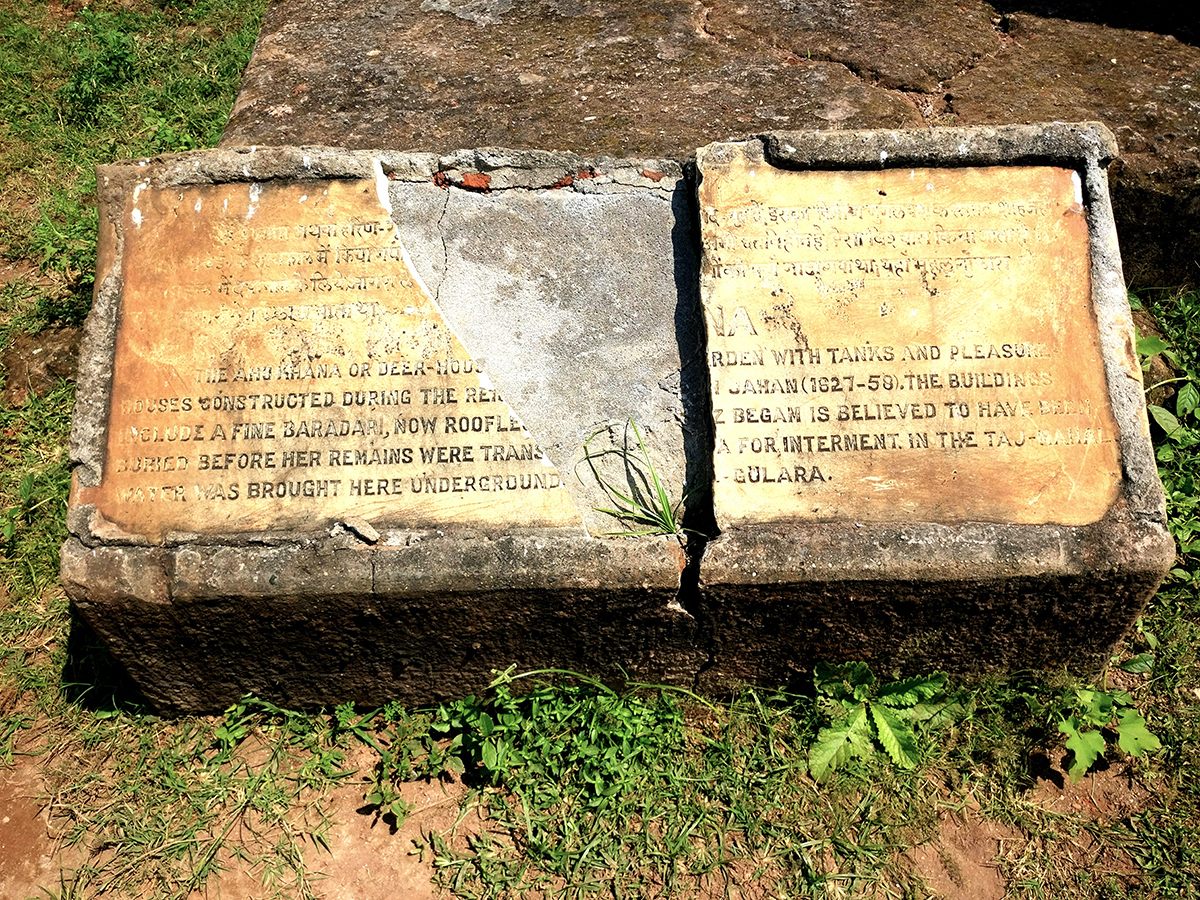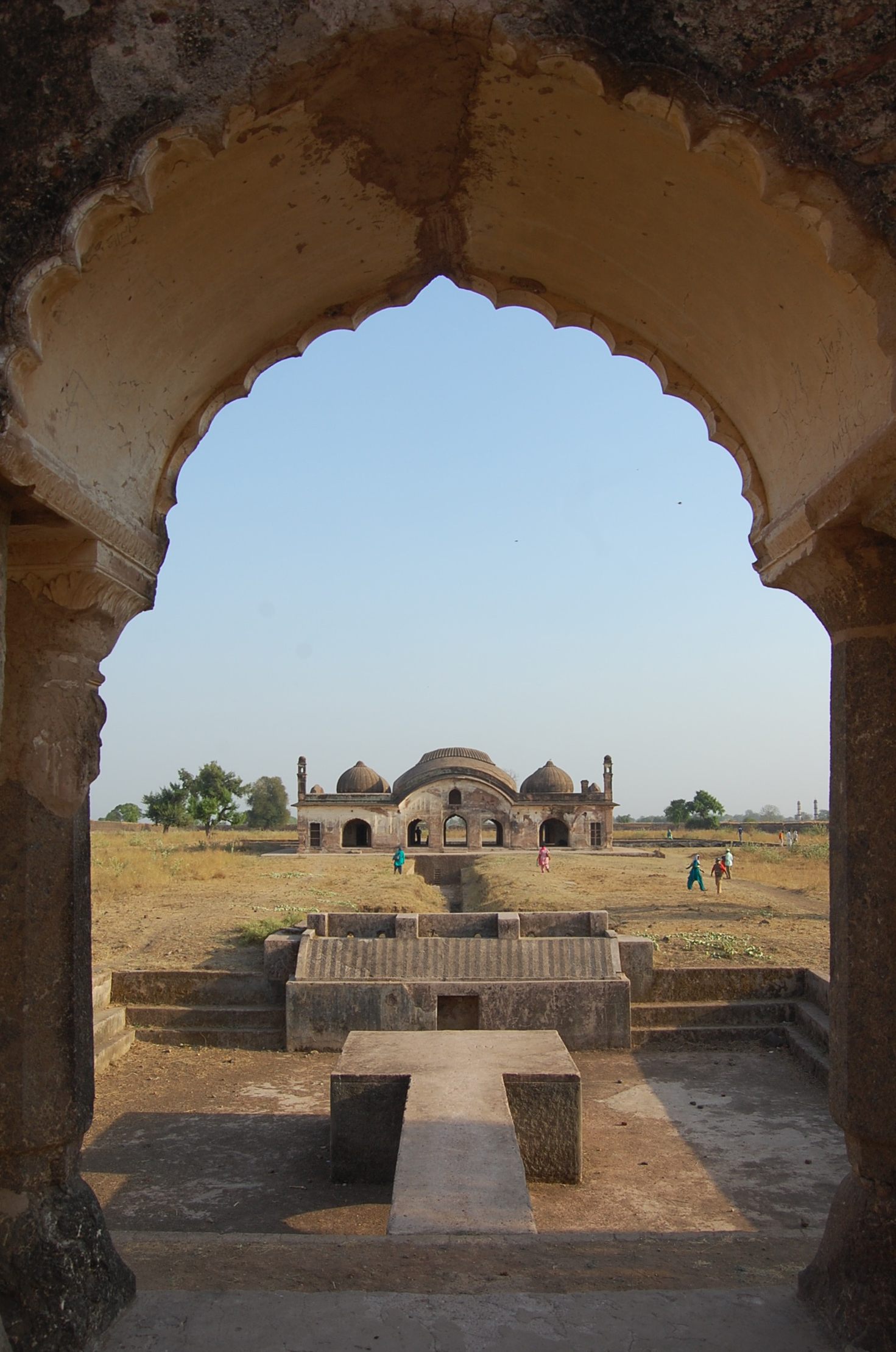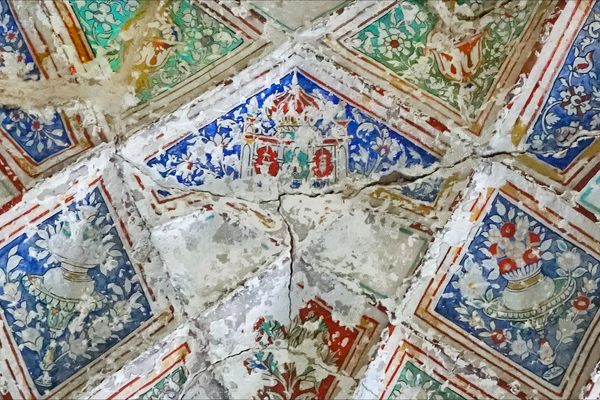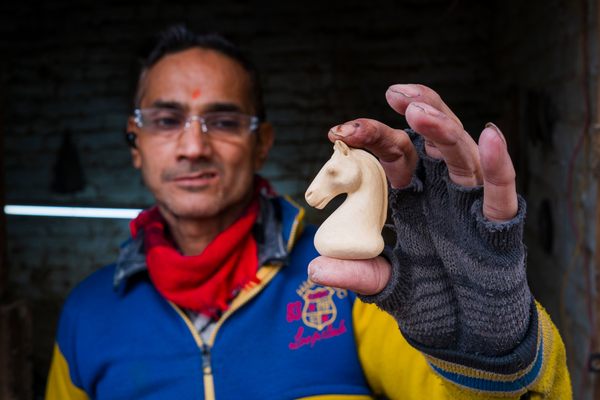Where the Mughal Empress Was Laid to Rest Before the Taj Mahal
A neglected monument in sleepy Burhanpur is connected to a much more famous place.

The glory and grandeur of the Taj Mahal stand beside those of any landmark in the world; the white marble mausoleum of Mughal emperor Shah Jahan and empress Mumtaz Mahal is instantly recognizable. But 500 miles southwest of the bustling streets of Agra, in the state of Madhya Pradesh, is the remote, relatively sleepy city of Burhanpur, which holds another chapter in the afterlife of Mumtaz. There, spared the flood of tourists, are the shambling ruins of the Ahukhana, Mumtaz’s original resting place.
“As citizens of an ancient glorious civilization, we are obligated to have a deep sense of appreciation for our cultural heritage,” says Mohammed Shehzada Asif Khan, 72, a photographer, who has been organizing the Mumtaz Mahal Festival in Burhanpur for the past 40 years. “But even as seven to eight million people flock to the Taj Mahal each year, no one knows or cares about the Ahukhana, the queen’s original tomb.”
The Ahukhana was built in 16th century as a deer park for Mughal emperor Shah Jahan. The garden sprawled over six miles, with two main structures, a small palace adorned with traceries and a pillared pavilion known as the baradari. It was at the baradari that the remains of Mumtaz laid in state for six months after her death. The tomb, however, is highly neglected today—grounds overgrown, walls marked with graffiti, columns marred with alarming cracks.

Shah Jahan ruled his empire from the capital Delhi in the north. In the late 1620s, his empire was beset by revolts among the Deccani kingdoms to the south. To quell the unrest, he set up a command center in Burhanpur, the gateway to southern India, famous then for its chintzes and opium, and directed military operations from the city for two years. He resided there at Shahi Qilla, a large palace across the Tapti River from the deer park. It was there, according to Diana and Michael Preston, authors of 2010’s A Teardrop on the Cheek of Time: The Story of the Taj Mahal, that Mumtaz died while giving birth to her 14th child, on June 17, 1631.
“Weak through the loss of blood, Mumtaz whispered to her distraught husband of their everlasting love and begged him not to marry again. Her final request was that he should build her a mausoleum resembling paradise on earth, just as she had seen in her dreams,” they write. “The authoritative court chroniclers record her death just a few minutes after giving birth to a daughter: When she brought out the last single pearl, she emptied her body like an oyster.”

Nandkishore Devda, a 90-year-old historian who has penned three books on Burhanpur, says that for a week after Mumtaz’s death, Shah Jahan did not appear before the court, and it seemed as if life had ceased to interest him. “The court went into mourning, and officers donned white garments. The intensity of the affliction was such that Shah Jahan’s hair turned gray overnight, and for the next two years, he abstained from all worldly pleasures. At festive occasions like Eid, he wept bitterly, lamenting the loss of the most loved of all his wives,” he says.
For six months after her death, her embalmed remains resided at the Ahukhana. Shah Jahan, according to Devda, spent days in his palace, gazing at his wife’s tomb. He recited the fateha for her soul every Friday at the baradari.
In its day, the Ahukhana was a royal Mughal retreat, with majestic fountains and canals flanking rose beds. The baradari complex was built with rose-tinted sandstone, richly decorated with murals and frescoes. That sense of opulence is long-gone today. A muddy track leads to the ruins, so it is inaccessible and waterlogged during the monsoon. Wild, overgrown grass covers the site where the formal garden once was. The roof of the baradari pavilion long ago collapsed into rubble. The Shahi Qilla, across the river, is a ruin as well, but is much more well-maintained and visited. Both sites are, like many heritage sites in India, nominally under the stewardship of the Archaeological Survey of India (ASI).
“Because it is poorly maintained, the Ahukhana, despite its historical significance, does not have many visitors—about 80 to 100 each month,” says Vasanta Bodhade, a 50-year-old caretaker, who has been posted at the site for the past decade. “The ASI does visit for surveys, but no repair work has been undertaken in years.”

According to conservation experts, the Ahukhana is a particularly challenging site to maintain. Kurush Dalal, an archaeologist at the University of Mumbai, says, “It’s a plastered building made of bricks. All that ASI can do is use more plaster, and keep restoring it back to its original form. I agree the garden needs to be maintained, and that they should at least build a decent public urinal at the site. But the property isn’t a priority for ASI, which is critically short-staffed.”
Zulfeqar Ali, superintending archaeologist with the ASI, Bhopal Circle, agrees. “We had proposed landscaping at the Ahukhana two years ago, but owing to water shortage in the area, we could not proceed. We also considered building a bore well, but that could not materialize either. We are in process of figuring other options,” he says, adding that his office has recently floated a proposal for repair work.
Shah Jahan wished to commemorate his queen, but Burhanpur proved to be “only a stop-gap arrangement,” Dalal says. Six months after her death, on December 14, 1631, a melancholy procession set out from Burhanpur to bring her remains to Agra. For 22 years, until Taj Mahal was complete, in 1653, she was kept in a garden on the banks of the Yamuna River.
However, for locals in Burhanpur, the first tomb is more than a morgue, but is a treasured part of Mughal history in its own right. The city is full of heritage enthusiasts, who are quick to point out that the ivory-white Taj Mahal was, at one time, intended to be erected in place of the Ahukhana.

Rafiq Shaikh, a 52-year-old resident of Burhanpur, echoes the popular local lore, which states that there were three reasons that Shah Jahan passed over Burhanpur as the site of his monument to love. “The soil—mostly sand infested by termites—was unfit to hold such a huge structure. The marble required for the mausoleum was to be brought from Rajasthan, which was closer to Agra. And lastly, the emperor wanted the edifice’s image to reflect into the river it was built by. Since Burhanpur’s Tapti River is much narrower than the Yamuna, where the Taj stands, Shah Jahan had to choose Agra.”
To the people of Burhanpur, the Ahukhana remains precious, and many harbor a strong desire to preserve it. Gopal Mahajan, a 46-year-old farmer and businessman, hopes to “adopt” the monument.
“The Indian Ministry of Tourism has recently launched a project called ‘Adopt a Heritage,’ whereby interested individuals can raise money, and ensure the site they’ve adopted is maintained, has basic and advanced amenities, and subject to timely repair work,” says Mahajan.“We’re in process of studying the logistics, and are gathering like-minded people, who are willing to invest time and money in protecting the Ahukhana.
“Our city is integral to the Mughal dynasty’s history, and we sincerely hope that one day, the world will acknowledge its cultural significance.”












Follow us on Twitter to get the latest on the world's hidden wonders.
Like us on Facebook to get the latest on the world's hidden wonders.
Follow us on Twitter Like us on Facebook